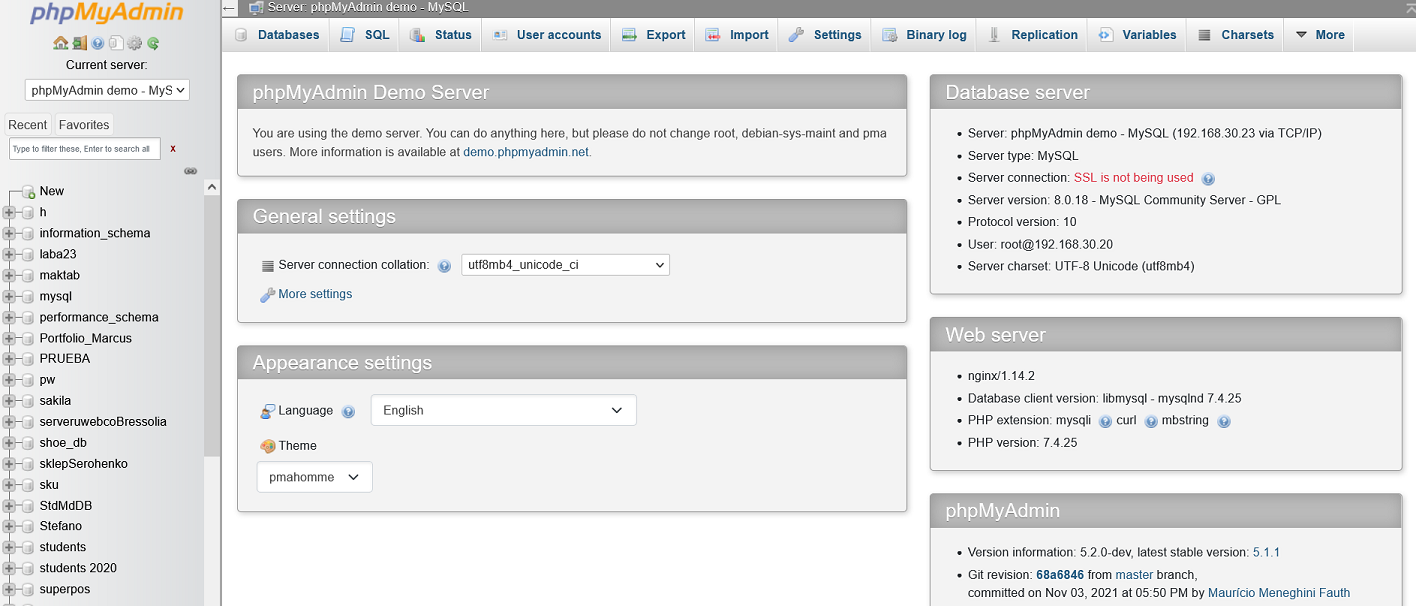

I prefer to just reload on production servers. Step 3 – Restart Apache ServiceĪfter creating a configuration file we need to restart or reload the Apache service. # Debian based system chown -R for RedHat based system and /etc/apache2/conf-available/nf for Debian based systems and add following settings there.Ĭhange 192.168.1.0/24 with your LAN subnet IP addresses. Generally, the Apache webserver runs under a user and group named www-data on Debian-based systems and apache on Redhat-based systems. Now set the proper permissions on files to be used with the web server.


wget unzip phpMyAdmin-5.1.3-all-languages.zip mv phpMyAdmin-5.1.3-all-languages /usr/share/phpmyadmin The latest version of phpMyAdmin is compatible with PHP >= 7.1 and MySQL/MariaDB >= 5.5 and newer. Click here to download latest or any older release of phpMyAdmin. If you do not have them read our tutorials on how to install them.ĭownload the latest phpMyAdmin source code and extract it to your system using. Before installing PHPMyAdmin make sure that you have Apache, PHP, and MySQL installed on the server. This article will help you to install phpMyAdmin on CentOS, RHEL, Fedora, Ubuntu, Debian, and other Linux operating systems. It provides a user-friendly web interface to access and manage your databases. PhpMyAdmin is web-based client written in PHP programming language for managing MySQL databases.


 0 kommentar(er)
0 kommentar(er)
